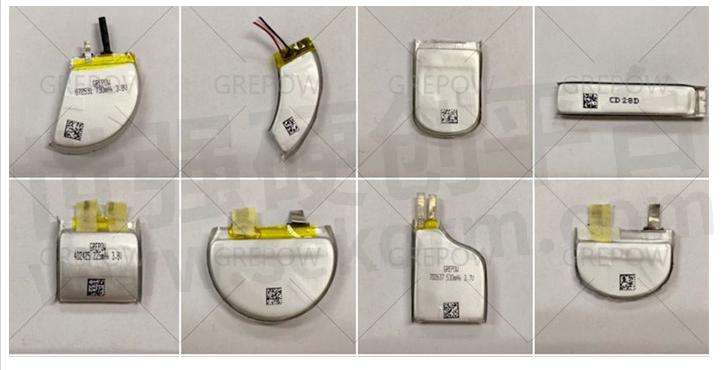How Does the Wearable Battery Devices Develop?

In recent years, new wearable devices, such as smartwatches and smart glasses, have been constantly appearing in our lives. At the same time, wearable battery technology has enabled these more powerful and smaller devices to be produced at higher speeds.
Global wearable device development
To understand the potential of wearable device applications, we only need to look at the number of wearable devices in the global market – this number is expected to grow from 5.6 million in 2013 to 124 million in 2020. Gartner, the world's leading information technology research and consulting firm, predicts that global wearable device shipments will reach 225 million units in 2019, an increase of 25.8% from 2018.
Several factors are driving this growth. In most developed countries, the smartphone market is almost full, and manufacturers have begun to develop devices that can create new trends, such as the ability to connect to wearable devices as peripheral devices. The emergence of the Internet of Things (IoT) has also driven this trend. 2/3 of the wearable devices are end devices that are worn on the body, such as watches and glasses, while others can be attached to shoes, clothes, or bags. Although the development potential of wearable devices is huge, there is still a big problem. How do we use these devices without having to constantly charge the wearable battery devices?
Power problems with wearable devices
Although the innovation of wearable devices is accelerating, the industry of wearable battery technology is still lagging. In particular, wearable battery life poses serious problems. If you need to recharge these items frequently, people will feel very troublesome. Wearables require a battery that lasts long enough to ensure that we don't have to take these devices down to charge, so our bodies are almost unaware of their existence.

Wearable devices typically require a small size and are lightweight. The problem is that wearable batteries on the market today face almost the same problem, that is, the smaller the battery, the smaller the energy density. At the same time, in the 20 years since the introduction of lithium-ion secondary batteries, battery technology has increased the energy density per unit volume by about 350%.
Wearable battery for wearable device manufacturers
In recent years, Grepow battery technology has made rapid progress, and it has become the first choice for power solutions for many wearable device manufacturers. The limitations of the size and shape of the wearable device, this has prompted us to develop new technology for the shaped battery, which can fully use the internal space of the device and increase the battery capacity. It's important to note that if you want longer battery life and an irregularly shaped wearable battery, Grepow is your ideal solution!
- +1 Like
- Add to Favorites
Recommend
- Grepow Provides Optimal Battery Solution for Wearable AR Projector in New Consumer Products under Al Technology
- Grepow Battery will exhibit at 2022 Summer Asia Smart Wearable Exhibition
- GREPOW NeoRRow Series Curved Lithium Polymer Batteries is Responding to the Smart Wearable Market‘s Development Demands
- Omnergy (LiJia)——Providing Solutions for Power Supply of Smart Wearable Devices
- Nanochap Nine Senses Series BAF003 Analog Front-end in Wearable Sweat Sensor, Small Size, Long Life
- BOYD Thermal Displacement is Designed for Customer‘s Wearable Electronic Device
- Wearable Barcode Scanner Battery Manufacturer
- Application of NGI Battery Simulator in Smart Wearable Device Testing
This document is provided by Sekorm Platform for VIP exclusive service. The copyright is owned by Sekorm. Without authorization, any medias, websites or individual are not allowed to reprint. When authorizing the reprint, the link of www.sekorm.com must be indicated.





























































































































































































































































































































































































































































































































































































































































































































































































































































































